Li Fanzhang, Zhang Li, Zhang Zhao
Dynamic Fuzzy Machine Learning
Unauthenticated
�
Also of Interest
Lie Group Machine Learning
F. Li, 2019
ISBN 978-3-11-050068-4, e-ISBN (PDF) 978-3-11-049950-6,
e-ISBN (EPUB) 978-3-11-049807-3, Set-ISBN 978-3-11-049955-1
Cloud Computing Architecture
J. Gu, 2018
ISBN 978-3-11-053784-0, e-ISBN (PDF) 978-3-11-054067-3,
e-ISBN (EPUB) 978-3-11-053998-1, Set-ISBN 978-3-11-054068-0
Trusted Computing
D. Feng, 2017
ISBN 978-3-11-047604-0, e-ISBN (PDF) 978-3-11-047759-7,
e-ISBN (EPUB) 978-3-11-047609-5, Set-ISBN 978-3-11-047760-3
Chaotic Secure Communication
K. Sun, 2016
ISBN 978-3-11-042688-5, e-ISBN (PDF) 978-3-11-043406-4,
e-ISBN (EPUB) 978-3-11-043326-5, Set-ISBN 978-3-11-043407-1
Unauthenticated
�
Li Fanzhang, Zhang Li, Zhang Zhao
Dynamic Fuzzy
Machine Learning
˚
Unauthenticated
�
Author
Prof. Fan Zhang Li
Soochow University
School of Computer Science
and Technology
No. 1 Shizi Road
215006 Suzhou, China
lfzh@suda.edu.cn
ISBN 978-3-11-051870-2
e-ISBN (PDF) 978-3-11-052065-1
e-ISBN (EPUB) 978-3-11-051875-7
Set-ISBN 978-3-11-052066-8
Library of Congress Cataloging-in-Publication Data
A CIP catalog record for this book has been applied for at the Library of Congress.
Bibliographic information published by the Deutsche Nationalbibliothek
The Deutsche Nationalbibliothek lists this publication in the Deutsche Nationalbibliografie;
detailed bibliographic data are available on the Internet at http://dnb.dnb.de.
© 2018 Walter de Gruyter GmbH, Berlin/Boston
Typesetting: Compuscript Ltd., Shannon, Ireland
Printing and binding: CPI books GmbH, Leck
Cover image: JIRAROJ PRADITCHAROENKUL / iStock / Getty Images
ċ Printed on acid-free paper
Printed in Germany
www.degruyter.com
Unauthenticated
�
Preface
As an important method of data analysis, machine learning technology has been
widely used in academic and industrial circles. In particular, the development of cloud
computing, logistics networks, big data, and quantum information has played an
unprecedented role in promoting the globalization of machine learning. In modern
data analysis, studying the technical level of computing may limit the whole process
of scientific research. As an analogy, analyzing the physical properties of a material
or the physical properties of molecular structures is quite hard to achieve through
calculations alone. The fundamental reason is the deep relationship between these
data structures and the semantic uncertainty, which makes it difficult to complete
certain tasks using only computing technology.
Dynamic fuzzy data (DFD) is one of the most difficult data types in the field
of big data, cloud computing, the Internet of Things, and quantum information. To
investigate the deep structure of relations and the data semantic uncertainty of DFD,
our research group has been studying this field since 1994, and we have proposed
various set, logic, and model system theories for uncertain datasets. To effectively
handle DFD, dynamic fuzzy sets, and dynamic fuzzy logic (DFL) are introduced
into the machine learning field, and the dynamic fuzzy machine learning theory
framework is proposed.
Our work has been published in international journals and presented at inter-
national conferences. The first draft of “Dynamic Fuzzy Machine Learning” has been
taught to master’s and doctoral students at Soochow University as an independent
54-hour course. Based on this, several revisions have been made. To meet the require-
ments of the readers of this book, the course is published here over a total of seven
chapters.
In the first chapter, the dynamic fuzzy machine learning model is discussed. This
chapter is divided into six sections. In the first section, we define the problem. In the
second section, we introduce the dynamic fuzzy machine learning model. In the third
section, we study some related work. The fourth section presents the algorithm of the
dynamic fuzzy machine learning system and the related process control model. In the
fifth section, we introduce the dynamic fuzzy relational learning algorithm. The sixth
section summarizes the chapter.
The second chapter describes the dynamic fuzzy autonomous learning subspace
learning algorithm. This chapter is divided into four sections. In the first section, we
analyse the current state of autonomous learning. In the second section, we present an
autonomous learning subspace theoretical system based on DFL. In the third section,
we introduce the autonomic subspace learning algorithm based on DFL. In the fourth
section, we summarize this chapter.
The third chapter is devoted to fuzzy decision tree learning. This chapter is divided
into six sections. In the first section, we examine the current state of decision tree
https://doi.org/10.1515/9783110520651-202
Authenticated
2:07 PM
�
vi ¸ Preface
learning. In the second section, we study the dynamic fuzzy lattice decision tree
method. In the third section, we discuss special attribute processing for dynamic fuzzy
decision trees. In the fourth section, we study the pruning strategy for dynamic
fuzzy decision trees. In the fifth section, we describe some applications of dynamic
fuzzy decision trees. The sixth section summarizes this chapter.
In the fourth chapter, we consider dynamic concepts based on dynamic fuzzy sets.
This chapter is divided into seven sections. In the first section, we analyse the relation
between dynamic fuzzy sets (DFS) and concept learning. In the second section, we
introduce the model of DF concept representation. In the third section, we model
the DF concept learning space, and the fourth section describes the concept learning
model based on the DF lattice. In the fifth section, we present a concept learning
model based on dynamic fuzzy decision tree. In the sixth section, we discuss some
applications of the dynamic concept based on dynamic fuzzy sets and analyse their
performance. In the seventh section, we summarize this chapter.
The fifth chapter concentrates on semi-supervised multi-task learning based on
dynamic fuzzy learning. This chapter is divided into six sections. The first section
introduces the notion of multi-task learning. In the second section, we describe
the semi-supervised multi-task learning model. In the third section, we introduce a
semi-supervised multi-task learning model based on DFS. In the fourth section, we
introduce a dynamic fuzzy semi-supervised multi-task matching algorithm. The fifth
section extends this to a dynamic fuzzy semi-supervised multi-task adaptive learning
algorithm. The sixth section summarizes this chapter.
In the sixth chapter, we study dynamic fuzzy hierarchy learning. This chapter
is divided into seven sections. The first section introduces the idea of hierarchical
learning. In the second section, we describe the design of an inductive logic program.
The third section discusses dynamic fuzzy hierarchical relational learning (HRL). In
the fourth section, we study dynamic fuzzy tree HRL, and the fifth section discusses
dynamic fuzzy graph HRL. In the sixth section, we give some applications of dynamic
concepts based on dynamic fuzzy sets and analyse their performance. The seventh
section summarizes this chapter.
In Chapter 7, we consider a multi-agent learning model based on DFL. This chapter
is divided into five sections. The first section introduces multi-agent learning. In the
second section, we introduce the agent mental model based on DFL. In the third
section, we introduce the single agent learning algorithm based on DFL. The fourth
section extends this idea to a multi-agent learning model based on DFL. In the fifth
section, we summarize this chapter. This book systematically introduces the relevant
content of dynamic fuzzy learning. It can be used as a reference book for senior
college students and graduate students as well as college teachers and scientific
and technical personnel involved in computer science, artificial intelligence, machine
learning, automation, mathematics, management science, cognitive science, financial
management, and data analysis. The text can also be used as the basis for a lecture
course on dynamic fuzzy learning.
Authenticated
2:07 PM
�
Preface ¸ vii
This book was designed and revised by Professors Li Fanzhang, Zhang Li, and
Zhang Zhao. Huang Shuning, Cui Jingmei, Zoupeng, Luo Xiaohui, Wu Xinjian, Li
Meixuan, Yin Hongwei, and Xu Xiaoxiang also assisted with the writing of the book.
We are grateful for the wisdom and work of all teachers and students involved in the
process. This book has also cited a large number of references, and it is our honour to
express our deep gratitude to the authors of all references. Thanks to the National Nat-
ural Science Foundation (61033013, 60775045, 61672364, 61672365), Soochow scholar
program (14317360, 58320007) and the key subjects of Jiangsu province “Technology
of computer science” and “Software engineering” for the support of this book.
Finally, I wish the book can bring happiness and inspiration to readers! Because
this work is the first attempt, combined with the author’s experience and knowledge
being limited, if there is any improper place, please contact us. Contact method:
E-mail: lfzh@suda.edu.cn, Tel.: 13962116494.
Li Fanzhang
December 12, 2016
Soochow University
Authenticated
2:07 PM
�
Authenticated
2:07 PM
�
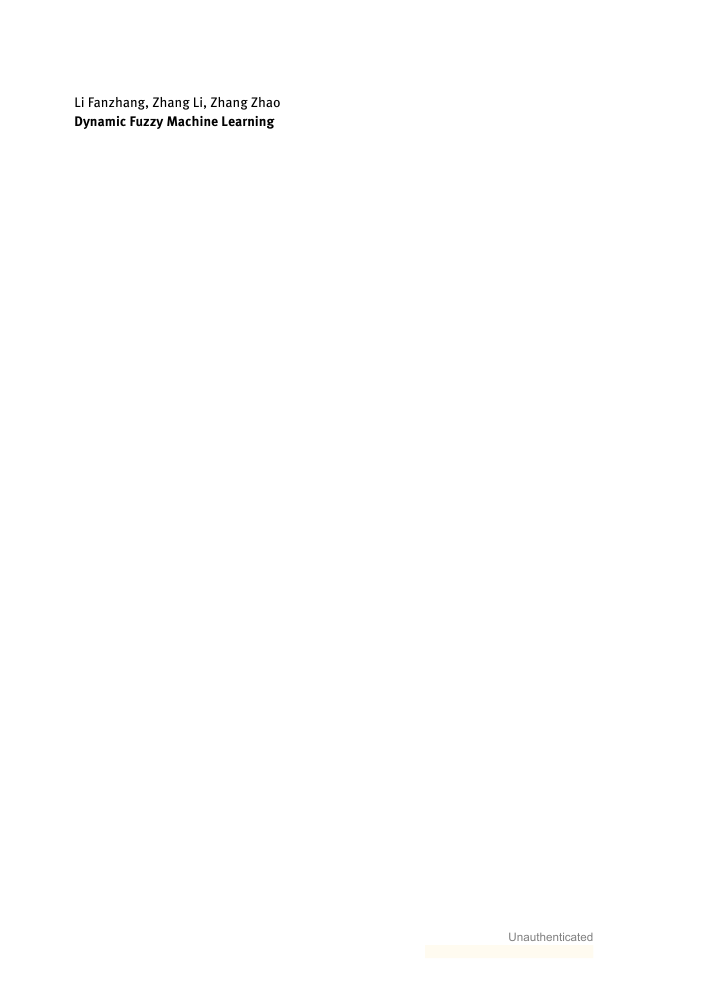
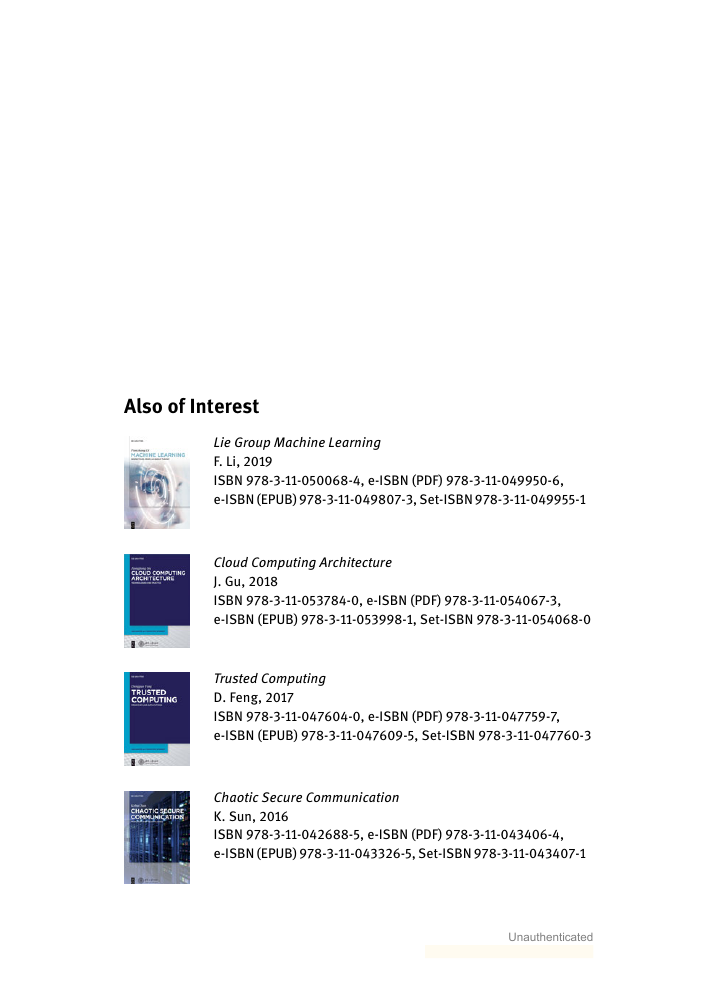

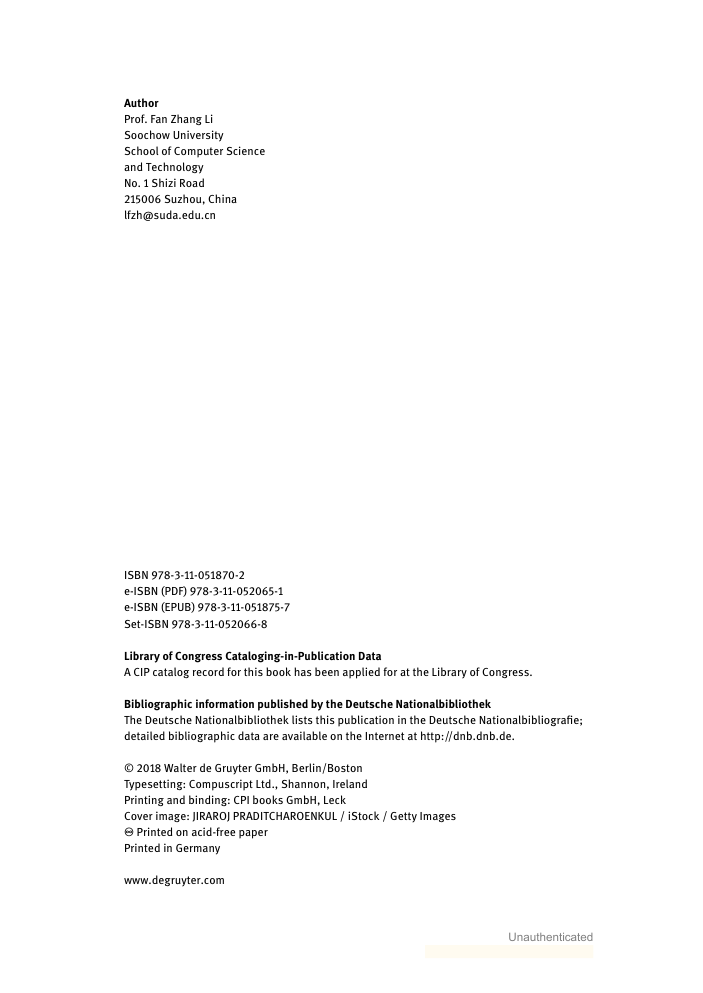
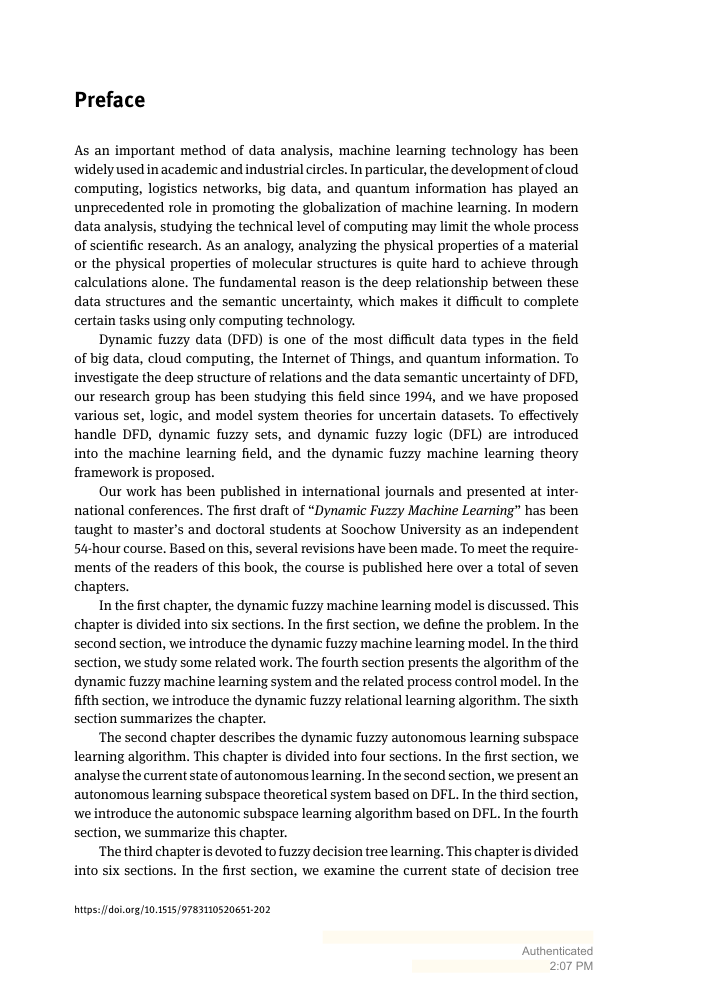
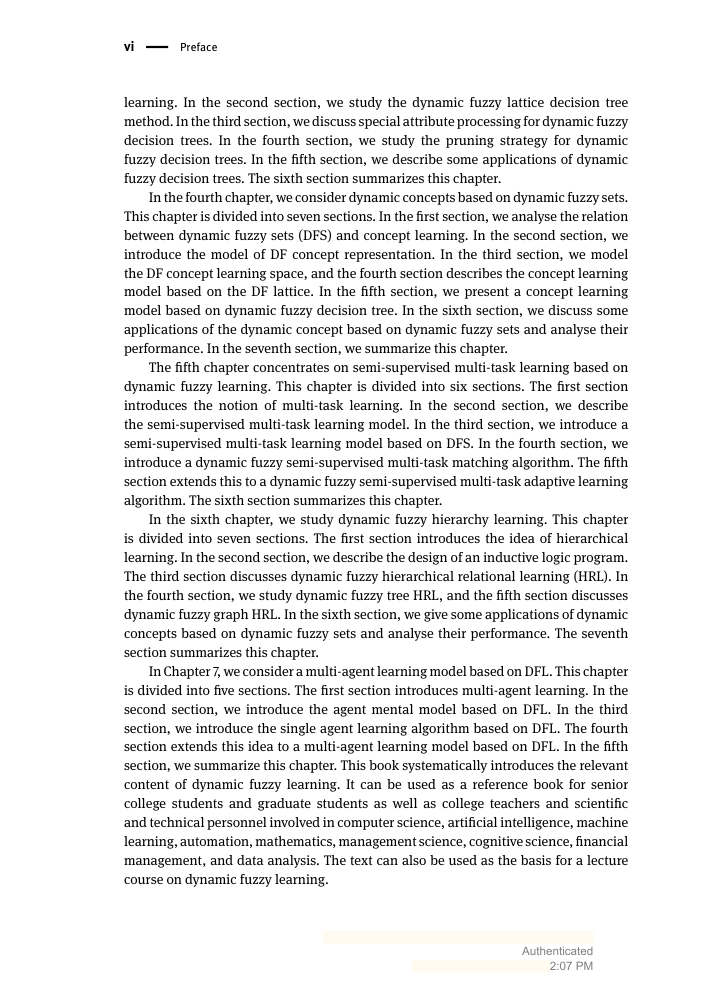










 2023年江西萍乡中考道德与法治真题及答案.doc
2023年江西萍乡中考道德与法治真题及答案.doc 2012年重庆南川中考生物真题及答案.doc
2012年重庆南川中考生物真题及答案.doc 2013年江西师范大学地理学综合及文艺理论基础考研真题.doc
2013年江西师范大学地理学综合及文艺理论基础考研真题.doc 2020年四川甘孜小升初语文真题及答案I卷.doc
2020年四川甘孜小升初语文真题及答案I卷.doc 2020年注册岩土工程师专业基础考试真题及答案.doc
2020年注册岩土工程师专业基础考试真题及答案.doc 2023-2024学年福建省厦门市九年级上学期数学月考试题及答案.doc
2023-2024学年福建省厦门市九年级上学期数学月考试题及答案.doc 2021-2022学年辽宁省沈阳市大东区九年级上学期语文期末试题及答案.doc
2021-2022学年辽宁省沈阳市大东区九年级上学期语文期末试题及答案.doc 2022-2023学年北京东城区初三第一学期物理期末试卷及答案.doc
2022-2023学年北京东城区初三第一学期物理期末试卷及答案.doc 2018上半年江西教师资格初中地理学科知识与教学能力真题及答案.doc
2018上半年江西教师资格初中地理学科知识与教学能力真题及答案.doc 2012年河北国家公务员申论考试真题及答案-省级.doc
2012年河北国家公务员申论考试真题及答案-省级.doc 2020-2021学年江苏省扬州市江都区邵樊片九年级上学期数学第一次质量检测试题及答案.doc
2020-2021学年江苏省扬州市江都区邵樊片九年级上学期数学第一次质量检测试题及答案.doc 2022下半年黑龙江教师资格证中学综合素质真题及答案.doc
2022下半年黑龙江教师资格证中学综合素质真题及答案.doc